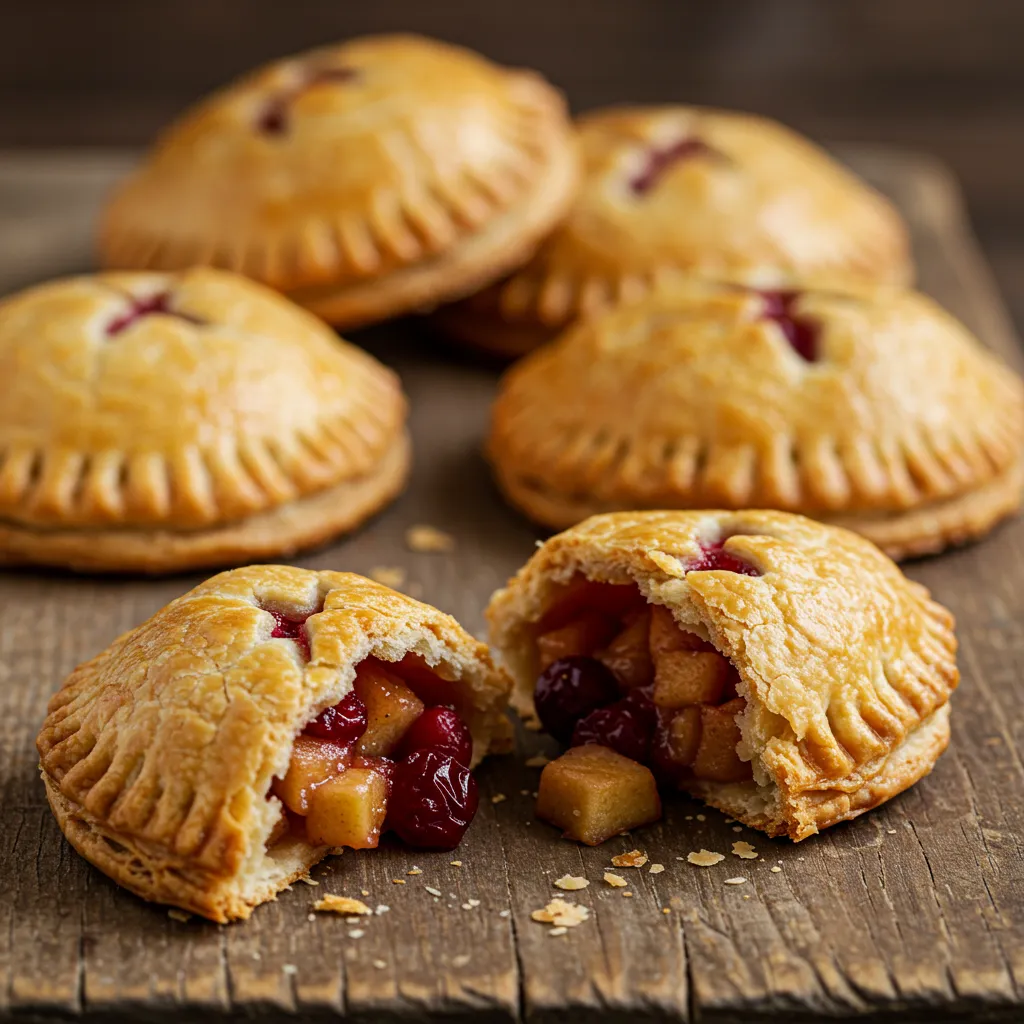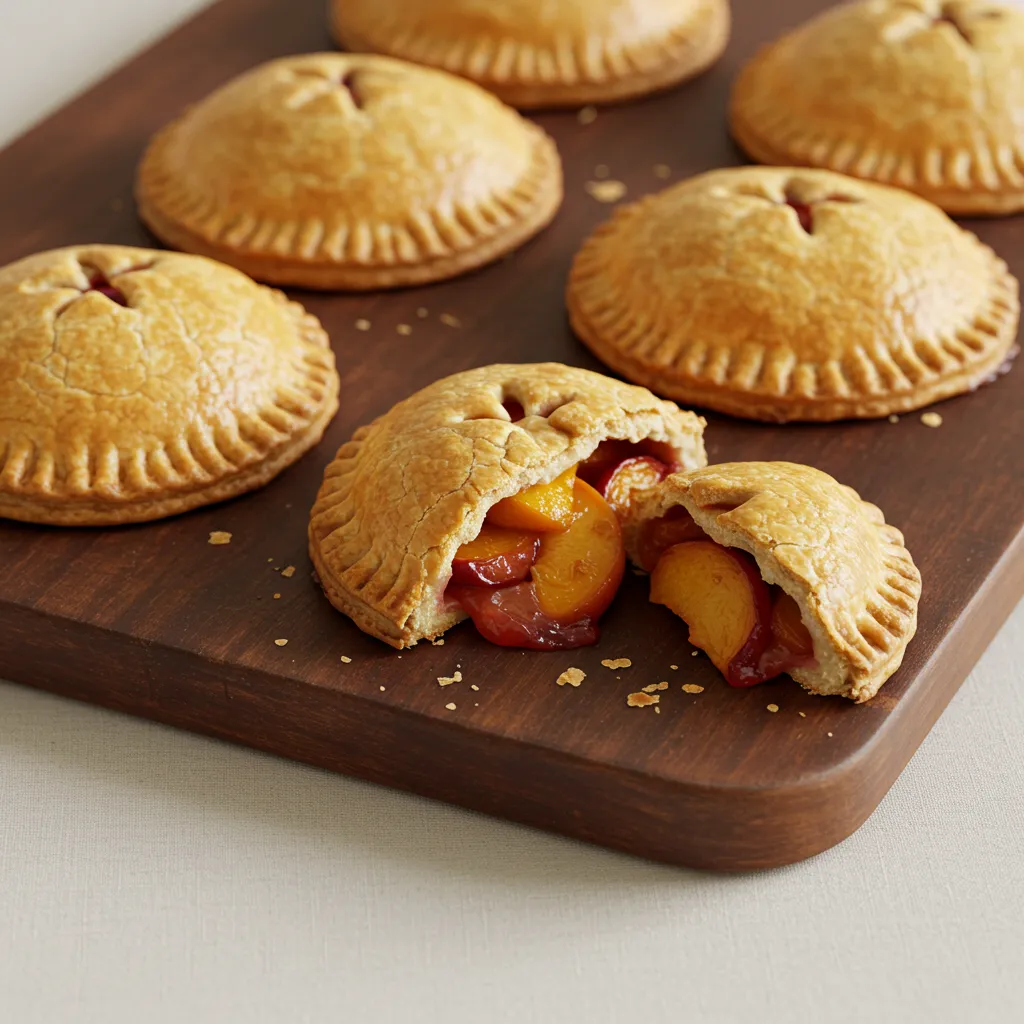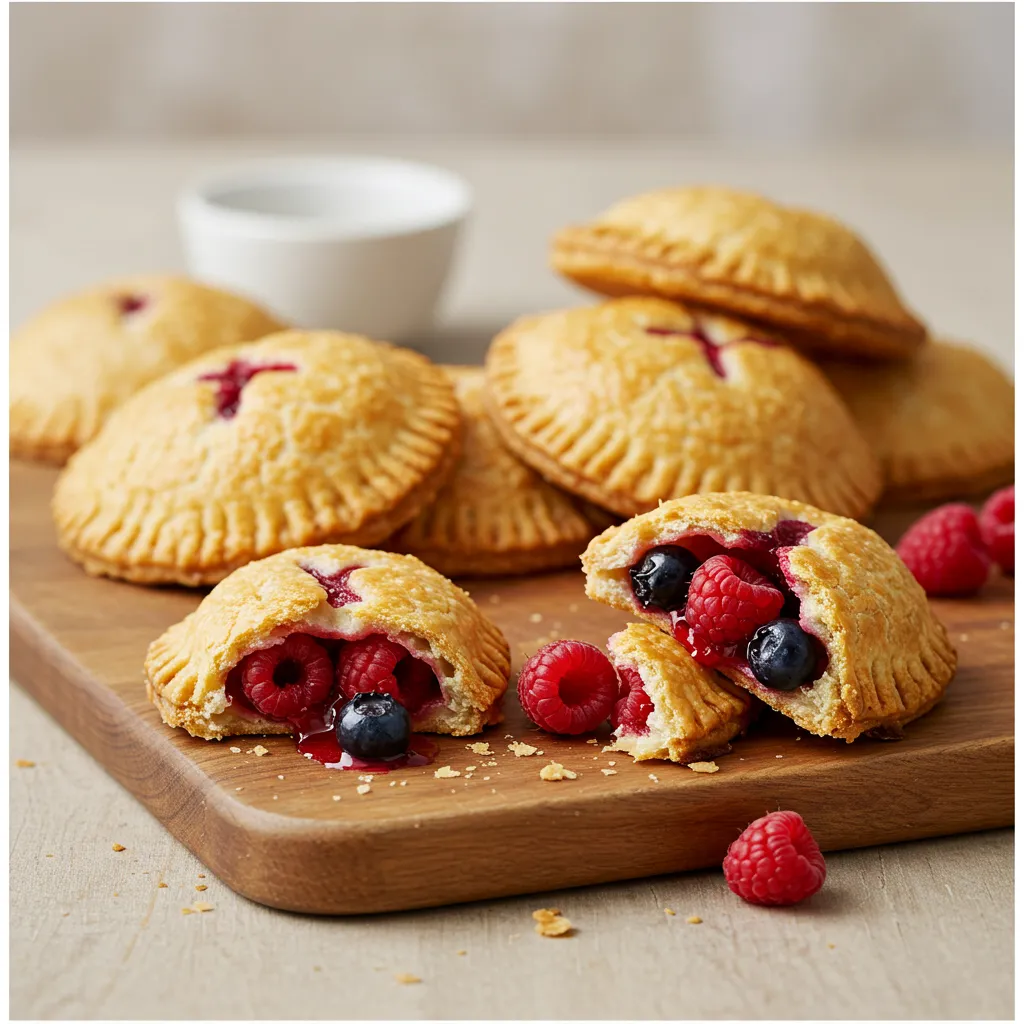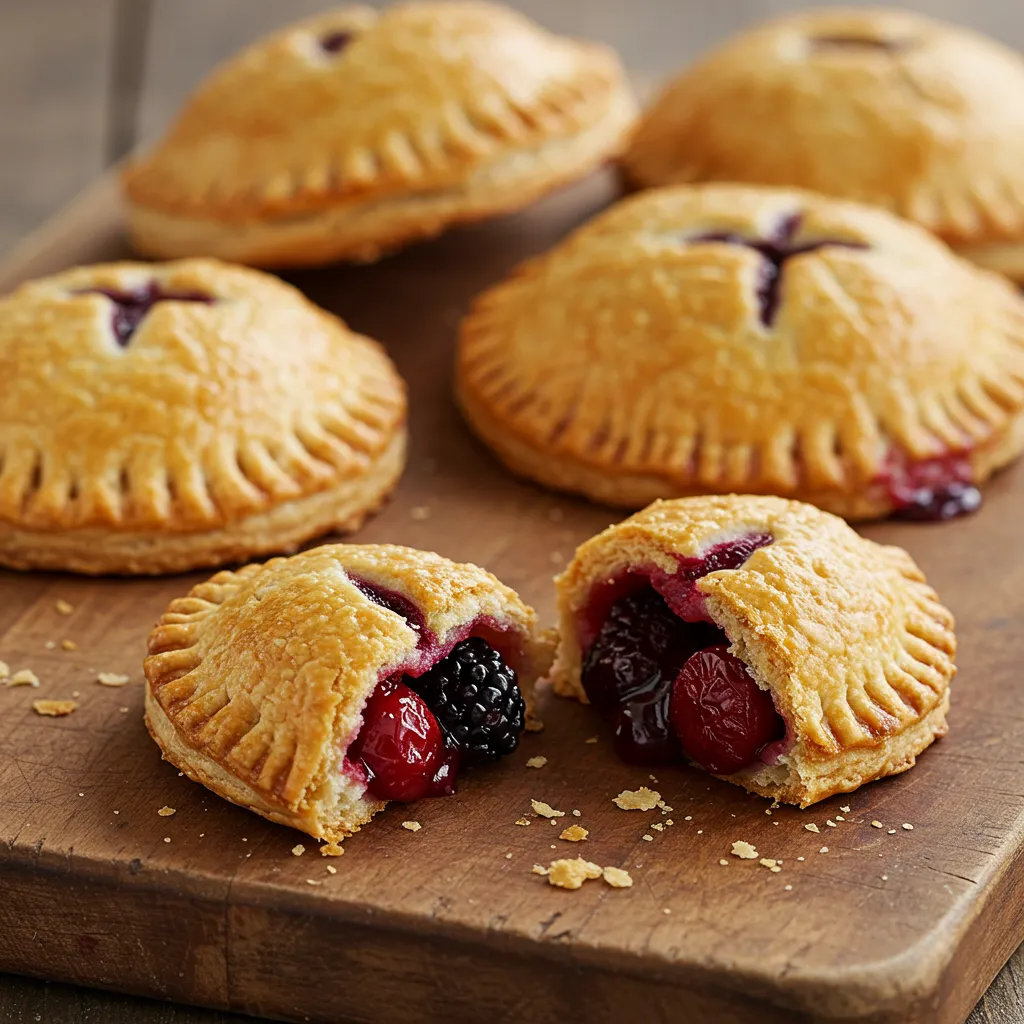Table of Contents
If you’re a fan of flaky, buttery pastries, you’ve probably had the pleasure of indulging in both hand pie and a tart. But do you really know the difference between these two beloved treats? Whether you’re preparing for a dinner party, family gathering, or just craving a comforting snack, understanding the distinction between these two can elevate your pastry game.
In this article, we’ll explore the hand pie vs. tart debate, diving into their origins, flavors, crusts, and fillings. From sweet to savory, we’ll show you how to choose the right pastry for any occasion. So, let’s get started on this delicious showdown!
What is a Hand Pie?
A hand pie is a portable pastry that typically consists of a folded dough crust filled with sweet or savory fillings. It’s often baked or fried and is designed to be eaten with one hand—perfect for a snack on the go. Common fillings include fruits like apples or berries, as well as savory options such as meat, cheese, or vegetables.

Hand pies trace their roots back to European cultures, where they were called “pasties” or “empanadas.” These pastries were originally created as easy, portable meals for laborers and travelers.
The key features of a hand pie include:
- Crust: Thick, flaky, and golden brown.
- Filling: Rich, flavorful, and fully encased in dough.
- Texture: Crispy on the outside, with a tender interior.
What is a Tart?
A tart is a more refined pastry, consisting of a shallow, open-faced crust that holds various fillings. Tarts are typically made in a tart pan, which gives them their signature fluted edges. The crust is generally a shortcrust or pâte sucrée (sweet pastry dough) that is tender yet crumbly. The fillings in a tart can range from sweet custards and fruits to savory options like quiche.
Tarts have a long history, dating back to medieval Europe, where they were considered a sophisticated dessert. Today, they remain a popular choice in fine dining and casual baking.
Key features of a tart include:
- Crust: Firm, buttery, and crumbly.
- Filling: Exposed and beautifully arranged, often with decorative flair.
- Texture: Crisp and crumbly crust with creamy or juicy fillings.
Hand Pie vs. Tart: The Key Differences
Here’s a quick breakdown of the primary differences between hand pies and tarts:
| Feature | Hand Pie | Tart |
|---|---|---|
| Crust Type | Flaky, thick, often golden brown | Firm, crumbly, buttery |
| Filling | Enclosed in dough, portable | Open-faced, arranged decoratively |
| Serving Style | Single serving, handheld | Typically sliced and served on a plate |
| Baking Method | Baked or fried | Baked |
| Texture | Crispy, tender interior | Crisp crust, smooth or juicy filling |
The Perfect Crust: Hand Pie Dough vs Tart Dough
One of the key components of both hand pies and tarts is their crust. The dough for hand pies is typically a flaky pastry dough, which results in a light, crisp exterior. On the other hand, tart dough is often shortcrust, providing a firmer, buttery, and crumbly texture.
- Hand Pie Dough: The dough should be rolled out into thin sheets, but not too thin, as it needs to hold the filling securely. The goal is to achieve a golden-brown finish that’s flaky and slightly crisp.
- Tart Dough: Tart dough, also called pâte sucrée, is a sweetened shortcrust dough. It’s pressed into the tart pan and baked until golden. The texture is typically firmer and more biscuit-like compared to hand pie dough.
Sweet vs. Savory: Filling Variation
Both hand pies and tarts are incredibly versatile when it comes to fillings. You can choose sweet or savory options for both, making them perfect for any occasion.
Hand Pies:
- Sweet Fillings: Apple, cherry, peach, blueberry, and even chocolate are popular choices.
- Savory Fillings: Ground beef, chicken, or even cheese and vegetables.

Tarts:
- Sweet Fillings: Lemon curd, raspberry jam, chocolate ganache, and fruit preserves.
- Savory Fillings: Spinach, cheese, caramelized onions, or smoked salmon.
How to Make Hand Pies: A Simple Recipe
Making hand pies at home is easier than you might think! Here’s a simple recipe to get you started:
Ingredients for Hand Pies:
- 2 cups all-purpose flour
- 1 cup unsalted butter (cold, cut into cubes)
- 1/4 cup cold water
- 1/4 tsp salt
- 1 tbsp sugar (optional, for sweet pies)
- Filling of your choice (fruit jam, chocolate, cheese, etc.)
How to Make Hand Pies:
- Prepare the Dough: In a large mixing bowl, combine the flour and salt (and sugar, if making sweet hand pies). Add the cold butter and cut it into the flour until the mixture resembles coarse crumbs.
- Add Water: Slowly add cold water, a tablespoon at a time, until the dough begins to form. Knead gently to bring it together.
- Chill the Dough: Wrap the dough in plastic wrap and chill it in the refrigerator for at least 30 minutes.
- Fill and Fold: Roll out the dough, cut it into rounds, and add your desired filling in the center. Fold the dough over and crimp the edges to seal.
- Bake: Place the hand pies on a baking sheet and bake at 375°F (190°C) for 20-25 minutes or until golden brown.
How to Make a Tart: A Basic Tart Recipe
Tarts require a little more finesse, but the results are worth it! Here’s how to make a classic tart:
Ingredients for a Tart Crust:
- 1 1/4 cups all-purpose flour
- 1/2 cup unsalted butter (cold, cubed)
- 2 tbsp sugar
- 1 large egg yolk
- 2 tbsp cold water
How to Make a Tart:
- Prepare the Dough: Combine flour, sugar, and butter in a food processor and pulse until the mixture resembles coarse crumbs. Add the egg yolk and cold water, then pulse until the dough begins to form.
- Chill the Dough: Wrap the dough in plastic wrap and refrigerate for 30 minutes.
- Press into Tart Pan: Roll out the dough and gently press it into a tart pan, trimming any excess dough around the edges.
- Fill and Bake: Preheat your oven to 350°F (175°C). Add your chosen filling (fruit, cream, or custard) and bake for 25-30 minutes until golden.

Nutritional Information: Hand Pie vs. Tart
Here’s a simple comparison of the nutritional values for both hand pies and tarts:
| Nutrient | Hand Pie (1 Serving) | Tart (1 Slice) |
|---|---|---|
| Calories | 200-350 | 300-450 |
| Fat | 10-20g | 15-25g |
| Protein | 3-5g | 4-6g |
| Carbohydrates | 25-35g | 30-40g |
Conclusion: Hand Pie vs. Tart – Which Will You Choose?
Whether you’re a fan of the hand pie’s portability or the elegance of a tart, both pastries have their own charm. Hand pies are perfect for casual, on-the-go snacking, while tarts offer a sophisticated touch to your dessert table.
Now that you know the differences, why not try making both? Don’t forget to share your creations with friends and family—hand pies and tarts are sure to be a hit no matter the occasion.
FAQs
- How do I make a hand pie without it being soggy?
- Ensure your filling is not too wet, and don’t overfill your hand pie. Also, baking at the right temperature (375°F) helps ensure a crispy, golden crust.
- Can I make a tart crust ahead of time?
- Yes, you can prepare the tart crust and refrigerate it for up to 2 days before baking.
- What’s the best filling for a hand pie?
- It depends on your preference! Fruit fillings like apple or cherry are always popular, but savory fillings like cheese or meat also make a delicious hand pie.

